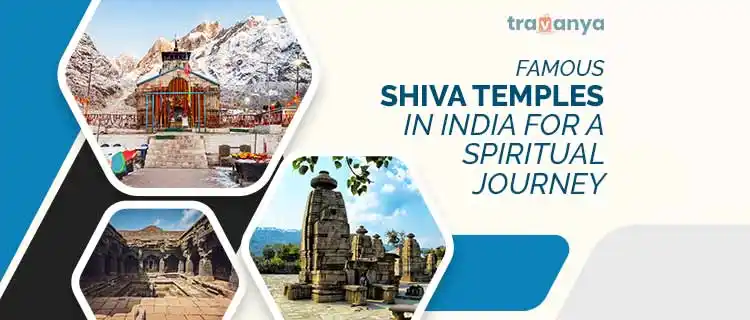
28 Famous Shiva Temples In India For A Spiritual Journey
Posted on Monday, October 28th, 2024 by Pawanpreet Kaur Leave a Comment
Lord Shiva is a well-known & loved god in Hinduism, worshipped by people all over India. Shiva temples are important in Hindu religion & Indian culture. Many interesting stories and legends about Lord Shiva have led to the creation of famous temples like the Dwadasha Jyotirlinga (12 temples), Panch Kedar (5 temples), & Panchabhoota Sthalams (5 temples representing the elements) in different parts of the country. With hundreds of Shiva temples across India, finding a “Shiv Mandir near me” is easy. We have made a simple list of these Mahadev temples, organized by their special features.
1. Kedarnath Temple
Kedarnath Temple is one of the most famous Shiva temples in India, dedicated to Lord Shiva. It is located in the foothills of the Garhwal Himalayan range in Uttarakhand, near the banks of the Mandakini River. Situated at an altitude of 3,883 meters, this sacred temple is a key destination in the Char Dham Yatra, along with Gangotri, Yamunotri, & Badrinath.
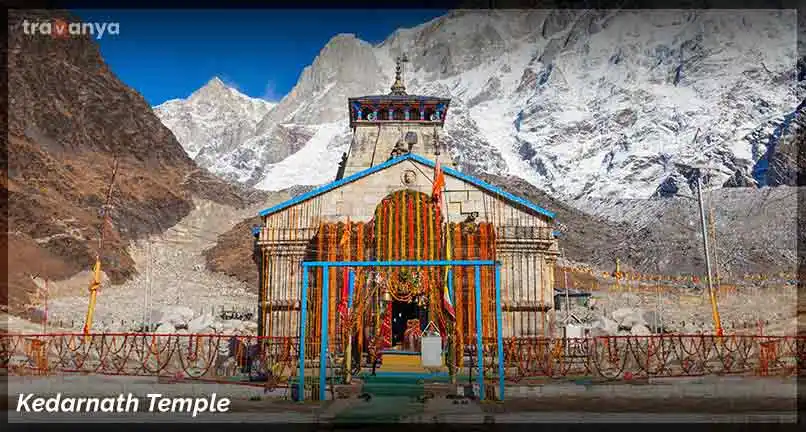
- Location: Garhwal Himalayan Range
- State: Uttarakhand
- Country: India
- Address: Garhwal Himalayan Range, near Mandakini river, Uttarakhand 246445
- Nearest Airport: Jolly Grant
- Built-In: 8th century A.D
- Built By: Guru Adi Shankaracharya
- Architectural Styles: Ashlar style of construction – stone stabs are interlocked without using cement or mortar.
- Deity: Kedarnath, Lord of Kedarkhand (Shiva)
- Temple Timings: 4 AM to 9 PM
- Festivals: Maha Shivratri
- Best Time To Visit In: May to June, September to October
- Nearby Location To Visit: Kalimath, Gandhi Sarovar
2. Amarnath Temple
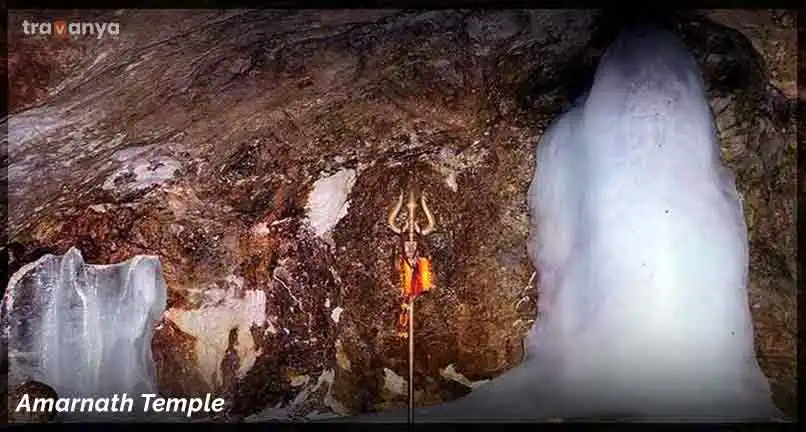
Another well-known Mahadev temple is the Amarnath Temple, which offers a unique experience for spiritual travelers in India. Located at an altitude of 3,888 meters in Jammu and Kashmir, this temple is famous for its ice lingam of Lord Shiva, which forms once a year. The journey to Amarnath is regarded as a spiritual pilgrimage & takes visitors through the beautiful but rugged landscapes of Jammu and Kashmir. This popular Shiva temple is sure to be cherished by everyone who visits.
- Location: Pahalgam
- State: Jammu and Kashmir
- Country: India
- Address: Baltal Amarnath Trek, Jammu and Kashmir 192230
- Nearest Airport: Srinagar airport
- Built-In: 1850
- Built By: Maharishi Bhrigu
- Architectural Styles: Rock-cut architecture
- Deity: Lord Shiva
- Temple Timings: 6 AM to 5:30 PM
- Festivals: Maha Shivratri
- Best Time To Visit In: May to September
- Nearby Location To Visit: Amarnath Cave, Sheshnag, Zoji La
3. Mahadev Lingaraj Temple
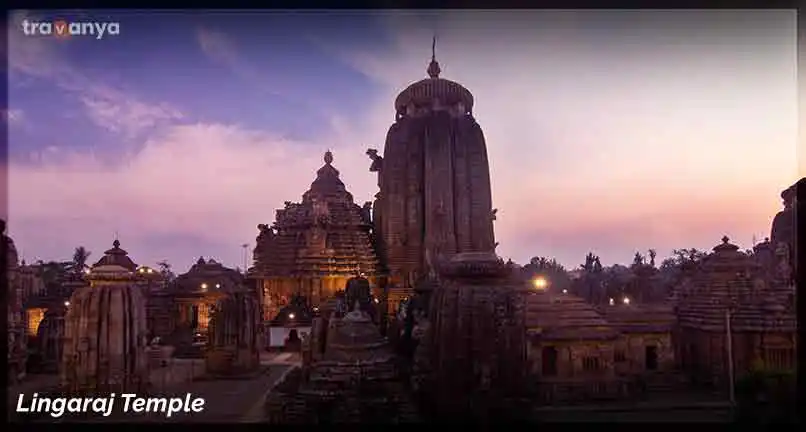
Lingaraj Temple is a beautiful example of Kalinga Architectural Style and is one of the must-visit Lord Shiva temples in India, celebrated for its unique artwork and design. This temple is dedicated to the form of Lord Shiva and is constructed from sandstone and laterite. It also features shrines dedicated to other deities. Here, Mahadev is worshipped as Tribhuvaneshwara, and his consort is honored as Bhubaneshwar. Lingaraj Temple is considered one of the oldest temples in the city of Bhubaneswar, Odisha.
- Location: Ekamra Kshetra
- State: Odisha
- Country: India
- Address: Ekamkra Kshetra, OldTown, Bhubaneshwar- 751002
- Nearest Airport: Biju Patnaik Airport
- Built-In: 1000 AD
- Built By: King Jajati Keshari
- Architectural Styles: Kalinga Architecture
- Deity: Lord Shiva and Vishnu
- Temple Timings: 5 AM to 9 PM
- Festivals: Shivratri, Candan Yatra
- Best Time To Visit In January to March
- Nearby Location To Visit: Mukteswara Temple, Parasurameswara Temple
4. Srikalahasti Temple
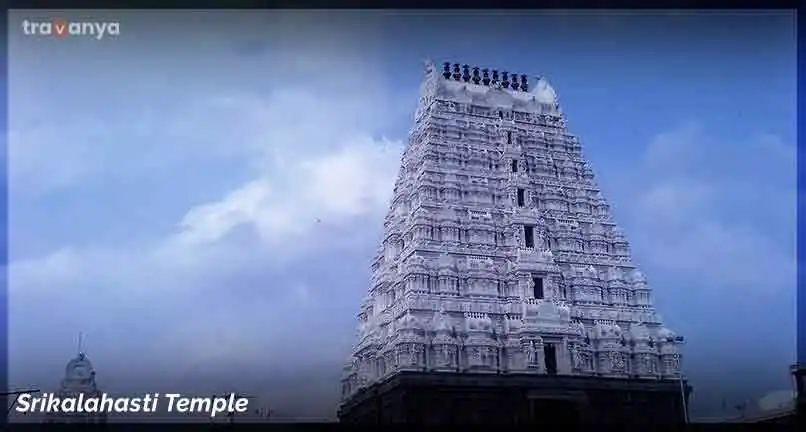
The amazing Srikalahasti Temple is situated in the Chittoor district of Andhra Pradesh. It is one of the renowned Shiva temples in India & holds a prominent place among the PanchaBhuta Sthalas, where Lord Shiva is worshipped as Kalahasteeswara. Built in the 12th century by the Chola & Vijayanagara kings, this temple is often referred to as the Kailash of the South. The white lingam found in this temple is considered a Swayambhu, meaning it is self-manifested.
- Location: Srikalahasti
- State: Andhra Pradesh
- Country: India
- Address: Srikalahasti, Andhra Pradesh 517644
- Nearest Airport: Tirupati Airport-Chittoor
- Built-In: 5th Century
- Built By: Rajendra Chola
- Architectural Styles: Dravidian style
- Deity: Lord Shiva, known as Kalahasteeswara
- Temple Timings: 5 AM to 9 PM
- Festivals: Maha Shivratri
- Best Time To Visit In: October, November, December, January, February, March
- Nearby Location To Visit: Kannappa Temple, Bharadwaja Theertham
5. Shiv Khori
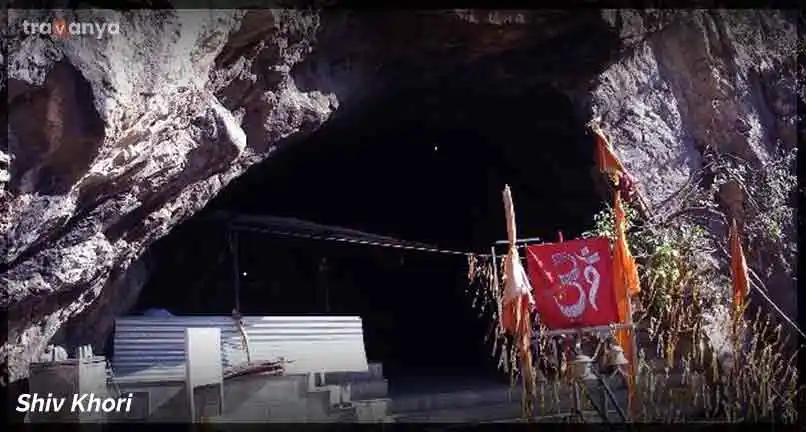
If you’re looking for a “Shiv Mandir near me,” the Shiv Khori Temple in Jammu and Kashmir is an exciting & adventurous destination for both devotees & tourists. Many believe that the cave leads to the Amarnath Temple, which is currently sealed after 135 meters. According to legends, the Shiv Khori Temple was formed when Lord Shiva created the cave with his Trishul while fleeing from the demon Bhashmasur, who was chasing him.
- Location: Shivkhori
- State: Jammu and Kashmir
- Country: India
- Address: Ransoo village, Sangar, Jammu and Kashmir
- Nearest Airport: Sri Guru Ram Das Jee
- Built-In: unknown
- Built By: unknown
- Architectural Styles: Stone carved
- Deity: Lord Shiva
- Temple Timings: 5 AM to 6 PM
- Festivals: Navratri, Maha Shivratri
- Best Time To Visit In: October, November and December
- Nearby Location To Visit: Shiv Mandir, Baba Dhansar
6. Mahabaleshwar Temple
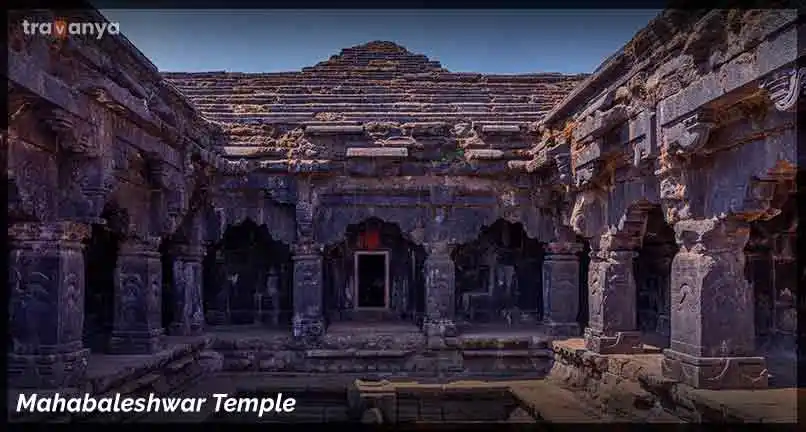
The Mahabaleshwar Temple in Gokarna is one of the most popular Bholenath temples and is an ancient site dating back to the 4th century CE. It holds great significance for devotees of Shaivism. Built in the classic Dravidian architectural style, this Mahadev temple in Karnataka is truly unique, showcasing the beauty and intricacies of Dravidian design.
- Location: Gokarna
- State: Karnataka
- Country: India
- Address: Koti Tirtha Rd, Kotiteertha, Gokarna, Karnataka 581326
- Nearest Airport: Pune airport
- Built-In: 4th Century
- Built By: Mayuravarma of Kadamba
- Architectural Styles: Dravidian architectural style
- Deity: Lord Shiva
- Temple Timings: 6am-12pm, 5pm-7pm
- Festivals: Shivratri
- Best Time To Visit In: December to February
- Nearby Location To Visit: Sri Panchgana Mandir, Muskan Organic Strawberry garden
7. Brihadeeswara Temple
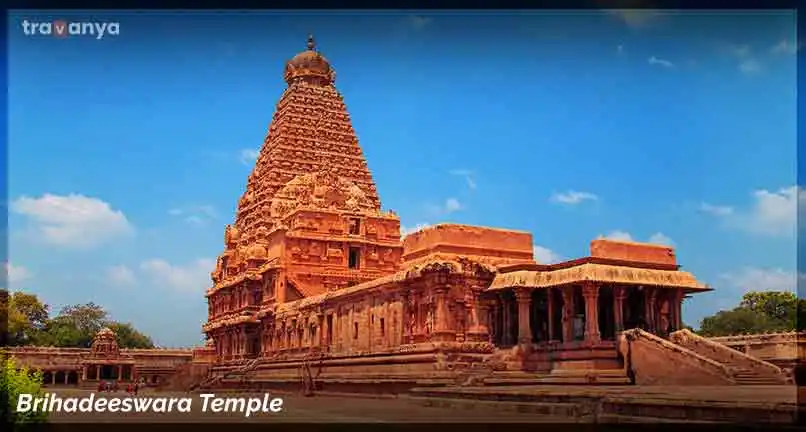
The Brihadeeswara Temple in Tamil Nadu features an impressive statue of Nandi, carved from a single rock. The main deity of the temple is Mahadev, & the temple’s exterior is adorned with images of other well-known deities, including Dakshinamurthy, Surya, & Chandra. This temple is one of the Shiva temples in India that showcases the statues of the Ashta Dikpalas. Designated as a UNESCO World Heritage Site, it was constructed by Raja Raja Chola & exemplifies the beautiful Dravidian architectural style.
- Location: Thanjavur
- State: Tamil Nadu
- Country: India
- Address: Membalam Rd, Balaganapathy Nagar, Thanjavur, Tamil Nadu 613007
- Nearest Airport: Tiruchirapalli
- Built-In: 1010 CE
- Built By: Raja Raja Chola
- Architectural Styles: Dravidian architecture
- Deity: Lord Shiva
- Temple Timings: 6am – 12:30 pm, 4pm-8:30pm
- Festivals: Chithirai Brahmotsavam, mahashivratri
- Best Time To Visit In: October to February
- Nearby Location To Visit: Gangaikonda Cholapuram
8. Murudeshwara Temple
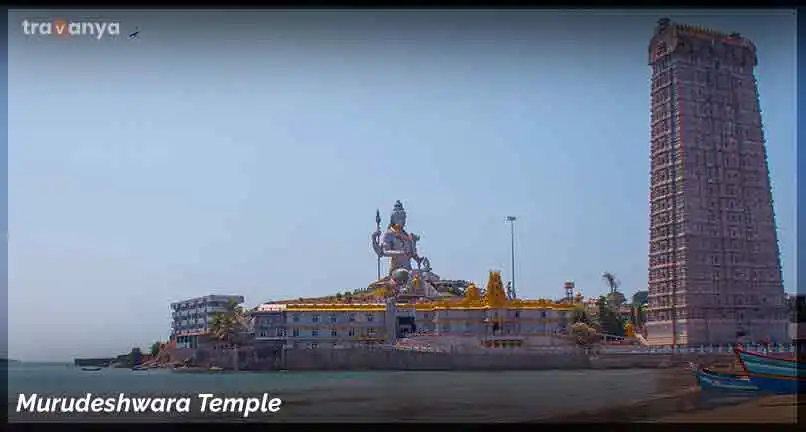
The Murudeshwara Temple is located in Bhatkal Taluk, Karnataka, perched on a hilltop surrounded by the waters of the Arabian Sea. This impressive 20-story temple is home to the second tallest statue of Lord Shiva in the world, creating a captivating atmosphere during sunset that draws many international tourists. The statue stands 37 meters tall & is estimated to have taken nearly two years to complete.
- Location: Bhatkal Taluk
- State: Karnataka
- Country: India
- Address: Murudeshwara Temple Main road, Karnataka 581350
- Nearest Airport: Mangalore International Airport
- Built-In: 2008
- Built By: Rani Chennabharadevi
- Architectural Styles: Dravidian style of architecture
- Deity: Lord Shiva
- Temple Timings: 06:00AM to 12:00PM, 3PM to 8:30PM
- Festivals: Maha Shivaratri
- Best Time To Visit In: October-February
- Nearby Location To Visit: Basavaraja Durga Fort, Bhatkal, Apsara Konda Falls, Baindur
9. Ramanathaswamy Temple
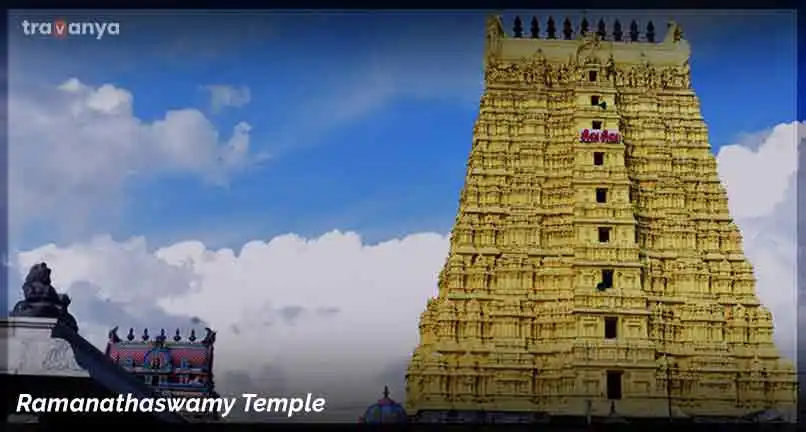
The Ramanathaswamy Temple is situated on the scenic island of Rameshwaram & is highly known by both Shaivite & Vaishnavite followers. As one of the famous Shiva temples in Tamil Nadu, this Mahadev temple is significant for those who worship Lord Shiva & admire art & architecture. Devotees believe that the idol of Mahadev in the Ramanathaswamy Temple was originally brought from the Kailash mountains by Hanuman, a devoted follower of Lord Rama.
- Location: Rameshwaram
- State: Tamil Nadu
- Country: India
- Address: Rameswaram, Tamil Nadu 623526
- Nearest Airport: Madurai Airport
- Built-In: 12th Century
- Built By: Sethupathy Maravar
- Architectural Styles: Dravidian style of architecture
- Deity: Lord Shiva
- Temple Timings: 4:30am-1pm, 3:00pm to 8:30pm
- Festivals: Sangadahara Chaturthi, Mahashivratri
- Best Time To Visit In: During the festival of Brahmotsavam, June and July
- Nearby Location To Visit: Hanuman Temple, Dhanushkodi Beach
10. Tungnath Temple
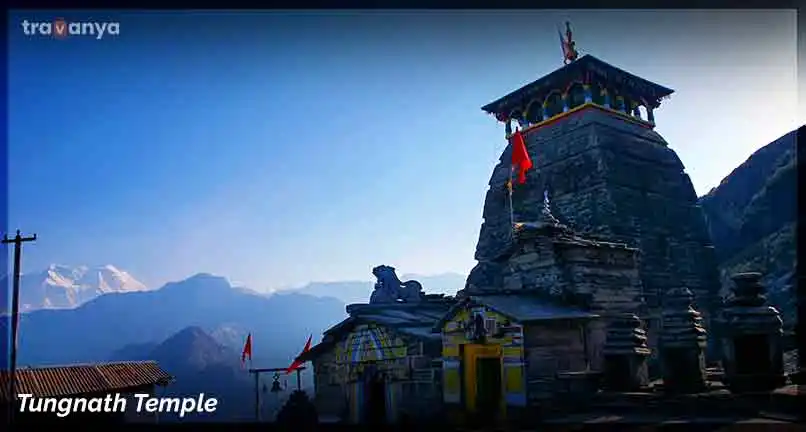
Tungnath Temple is an excellent choice for devotees who are also passionate about adventure activities. It is the highest-known Shiva temple in the world, situated at an altitude of approximately 3,680 meters in the Rudraprayag District of Uttarakhand, at the base of Chandrashila Peak. Trekkers often make their way to the Tungnath Temple as part of their journey to reach Chandrashila Peak. As one of the Panch Kedar Temples of Uttarakhand, Tungnath holds significant importance among Hindus.
- Location: Rudraprayag
- State: Uttarakhand
- Country: India
- Address: Rudraprayag, Uttarakhand 246419
- Nearest Airport: Jolly Grant airport
- Built-In: Unknown
- Built By: Pandavas
- Architectural Styles: North Indian Himalayan Architecture
- Deity: Lord Krishna
- Temple Timings: 6 am to 7 pm
- Festivals: Mahashivratri, Mahanavami
- Best Time To Visit In: September to December
- Nearby locations to Visit: Chandrashila, Chopta, Deoria Tal
11. Baijnath Temple
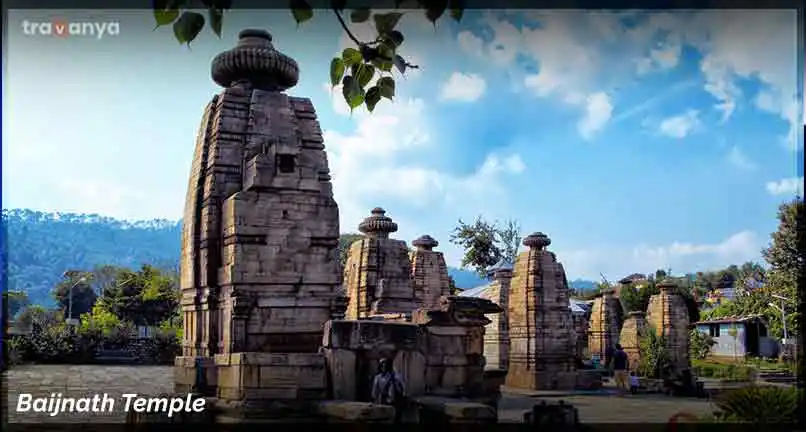
The Baijnath Temple, located in the scenic state of Himachal Pradesh, is highly valued by devotees & worshippers of Mahadev. It is home to one of the twelve Jyotirlingas of Lord Shiva in India, making it a significant pilgrimage site for those traveling from around the world to pay their respects. This Mahadev temple offers visitors a calming experience amid the Dhauladhar mountain ranges in the Himalayas, creating lasting memories. Anyone trekking or touring through the valleys of the Himalayas is likely to discover this temple & enjoy the serene atmosphere & breathtaking landscapes.
- Location: Baijnath located in Kangra District
- State: Himachal Pradesh
- Country: India
- Address: Almora-Bageshwar-Karanprayag-Rd,Baijnath, Uttarakhand 263641.
- Nearest Airport: Gaggal Airport
- Built-In: 1204 AD
- Built By: Ahuka and Manyuka
- Architectural Styles: Nagara Style
- Deity: Lord Shiva
- Temple Timings: 5 am – 7 pm
- Festivals: Mahashivratri and Mahanavami
- Best Time To Visit In: Winter
- Nearby Location To Visit: Kausani Tea estate, Anasakti Ashram
12. Kailasanathar Temple
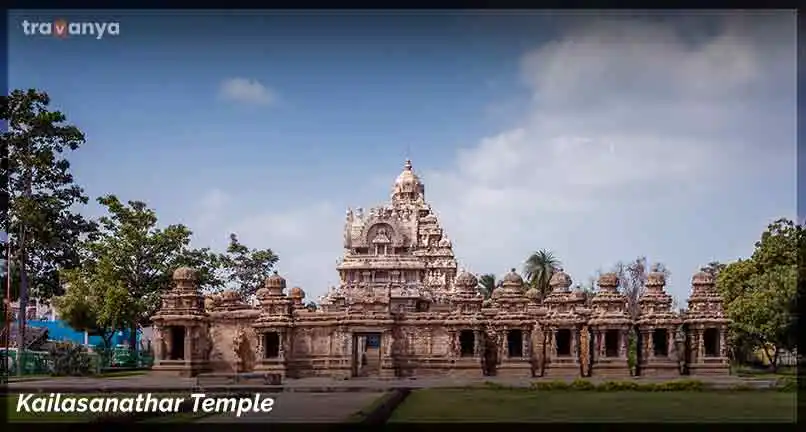
The Kanchi Kailasanathar Temple in Tamil Nadu was constructed between 680 A.D. & 705 A.D. by the Pallava ruler Rajasimha. Often referred to as the “sand temple,” it features vertical stones in its construction. One of the highlights of this temple is the impressive Shiva lingam, which stands 10 feet tall & has sixteen faces, offering a captivating sight for visitors. The temple is particularly known for its pretty Dravidian architectural style, making it a remarkable example of this design tradition.
- Location: Kanchipuram
- State: Tamil Nadu
- Country: India
- Address: Pillaiyarpalayam, Kanchipuram, Tamil Nadu 631501
- Nearest Airport: Tiruchirapalli Airport (TRZ)
- Built-In: 700 AD
- Built By: Narasimhavarman II
- Architectural Styles: Dravidian architecture
- Deity: Lord Shiva
- Temple Timings: 6 AM to 12 PM and 4 PM to 7 PM
- Festivals: Mahashivratri
- Best Time To Visit In: November to December
- Nearby Location To Visit: Ekambanadhar temple, Kanchi Kudil, Kamisha Temple
13. Vadakkunnathan Temple
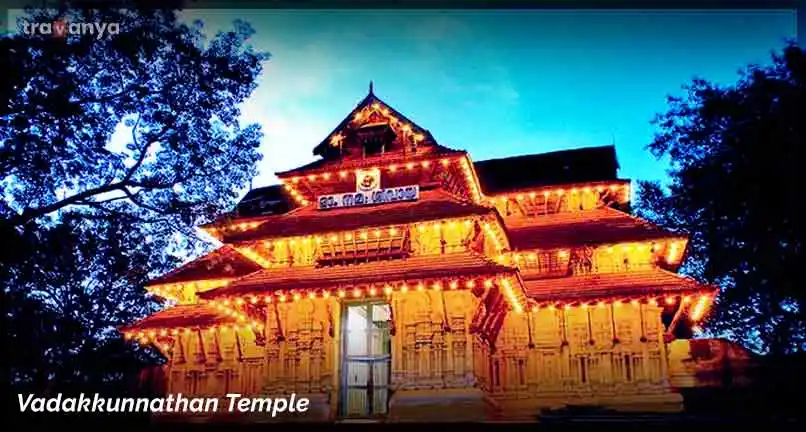
The Vadakkunnathan Temple is a well-known Shiva temple located in Thrissur, Kerala, in South India. Here, Lord Shiva is worshipped as Vadakkunnathan. It is believed that this temple was the first one constructed by Lord Parshuram. Every day of the year, the idol of Mahadev is honored with a substantial offering of ghee. This practice has resulted in a large formation of ghee in place of the Lingam, which visitors can see. The ghee used for the daily Abhishek and puja of Lord Shiva is later distributed to devotees as Prasad, or religious offering, to take home.
- Location: Thrissur
- State: Kerala
- Country: India
- Address: Thekkinkadu Maidan, Thrissur, Kerala 680001
- Nearest Airport: Cochin International Airport
- Built-In: 15th Century
- Built By: Parashurama
- Architectural Styles: Architecture of Kerala
- Deity: Lord Shiva is known as Vadakkunnathan
- Temple Timings: 4–11 am, 5–8:20 pm
- Festivals: Mahashivratri
- Best Time To Visit In: April to June
- Nearby Location To Visit: Sakthan Thampuran Palace
14. Kandariya Mahadeva Temple
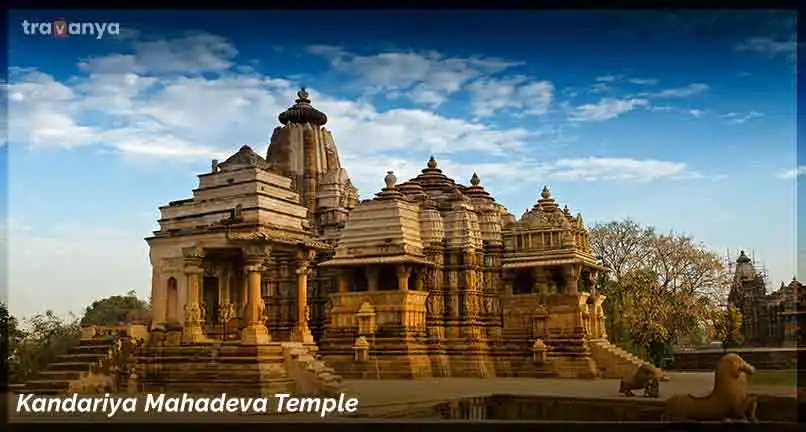
The Kandariya Mahadeva Temple in Khajuraho is famous for its pretty carvings adorning the walls, ceilings, &d pillars. These intricate designs illustrate the four essential pursuits of life: kama, artha, dharma, & moksha. The temple is set on a substantial plinth that rises about 4 meters (13 feet) high. Above this base, the temple structure is meticulously designed with detailed artwork. Its superstructure features a steep mountain-like shape, symbolizing Mount Meru, which is believed to be the mythical source of the world’s creation.
- Location: Sevagram
- State: Madhya Pradesh
- Country: India
- Address: Sevagram, Khajuraho, Madhya Pradesh 471606
- Nearest Airport: Khajuraho Airport (HJR)
- Built-In: Circa 1030
- Built By: Vidyadhara
- Architectural Styles: Nagara Style
- Deity: Lord Shiva
- Temple Timings: 5 AM-12 PM, 4PM-9 PM
- Festivals: Navratri, Mahashivratri
- Best Time To Visit In: December to March
- Nearby Location To Visit: Devi Jagadambi Temple, Lakshmana Temple
15. Kashi Vishwanath Mandir
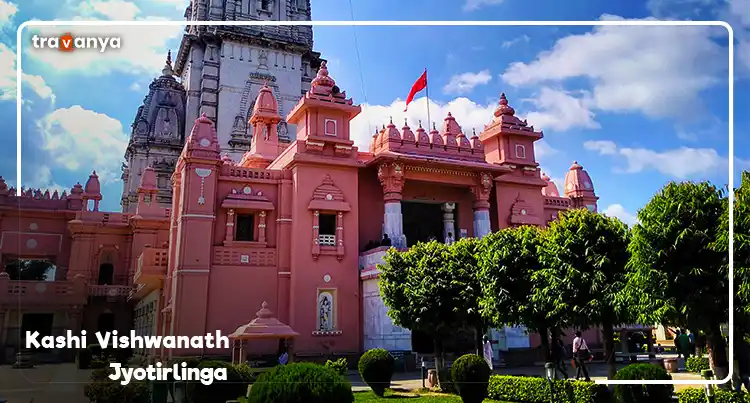
In Hinduism, it is widely believed that those who breathe their last in the Kashi Vishwanath Temple attain liberation from the cycle of rebirth. Located in Varanasi, one of the oldest cities in the world, this temple holds great significance for devotees of Shaivism & is one of the twelve Jyotirlingas. The Kashi Vishwanath Temple is among the richest & holiest shrines in India, dedicated to Mahadev, & features several smaller shrines of various Hindu deities surrounding the main temple. A striking brown effigy of Lord Shiva graces the temple grounds. Throughout history, the Kashi Vishwanath Temple has been demolished & rebuilt several times due to wars and cultural conflicts, making it a vital pilgrimage site & a key historical landmark.
- Location: Varanasi
- State: Uttar Pradesh
- Country: India
- Address: Lahori Tola, Varanasi, Uttar Pradesh 221001
- Nearest Airport: Lal Bahadur Shastri International Airport
- Built-In: 1780
- Built By: Ahilyabai Holkar
- Architectural Styles: Nagara style of architecture
- Deity: Lord Shiva
- Temple Timings: 6:00 A.M. to 6:00 P.M
- Festivals: Shivratri
- Best Time To Visit In: November to February
- Nearby Location To Visit: Ghats, boat rides to the Ganges
16. Airavatesvara Temple
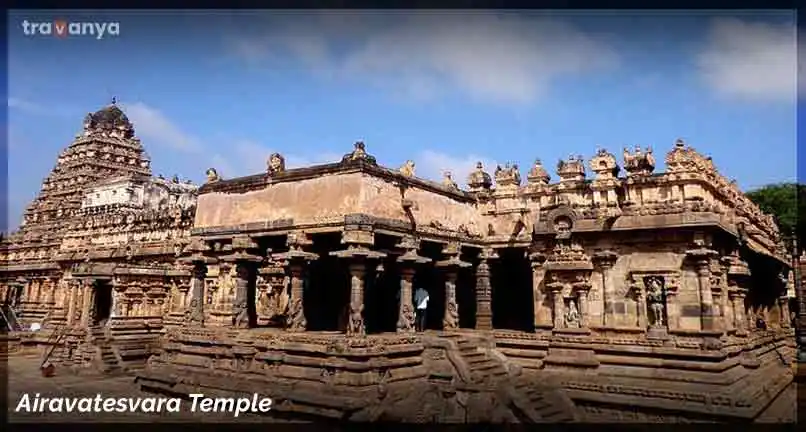
The Airavatesvara Temple in Tamil Nadu is the last of the three Great Living Chola Temples to be recognized as a UNESCO World Heritage Site in 2004. Known for its architectural splendor, the temple is named after Airavata, the white elephant of Indra, the King of Gods. One of the temple’s most intriguing features is its musical steps, which are considered one of history’s greatest mysteries. The Airavatesvara Temple beautifully showcases the rich heritage & archaeological significance of the Chola Empire. Locally, it is known as Darasuram Kovil or Airavateswarar Kovil, with “Kovil” meaning Hindu Temple in Tamil Nadu.
- Location: Kumbakonam
- State: Tamil Nadu
- Country: India
- Address: Gurunathan Pillai, Kumbakonam, Tamil Nadu 612702
- Nearest Airport: Chennai International Airport
- Built-In: 1166
- Built By: Chola king Rajaraja II
- Architectural Styles: Dravidian architecture
- Deity: Lord Shiva
- Temple Timings: 8am–12 pm, 4–8 pm
- Festivals: Mahashivratri
- Best Time To Visit In: June to September
- Nearby Location To Visit: Sri Chita Ramachandra Mandir
17. Ekambareswarar Temple
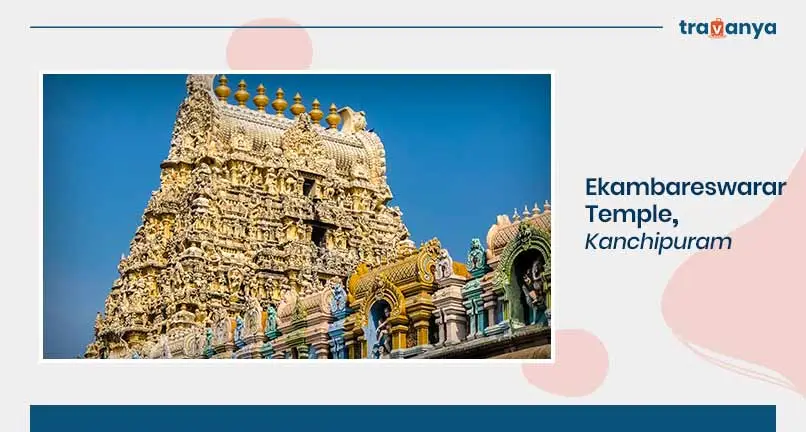
The Ekambareswara Temple is one of the five Pancha Bhoota Stalams, each representing an essential element of life. This ancient temple holds significant archaeological value for Hindus and visitors throughout India. It showcases the artistic contributions from various dynasties that ruled Kanchipuram. One of its most striking features is the 172-foot Raja Gopuram, an impressive architectural achievement constructed by the Vijayanagara Empire. Additionally, the temple reflects numerous architectural enhancements made by the Chola dynasty.
- Location: Kanchipuram
- State: Tamil Nadu
- Country: India
- Address: Sri Ekambareswarar Temple, Nageshwaram East Street, Kumbakonam
- Nearest Airport: Chennai International Airport
- Built-In: 9th Century
- Built By: Pallava
- Architectural Styles: Dravidian architecture
- Deity: Lord Shiva
- Temple Timings: 6 am–12:30 pm, 4–8:30 pm
- Festivals: Mahashivratri
- Best Time To Visit In: June and July
- Nearby Location To Visit: Mottai Gopura Vasal, Nageswaran
18. Neelkanth Mahadev Temple
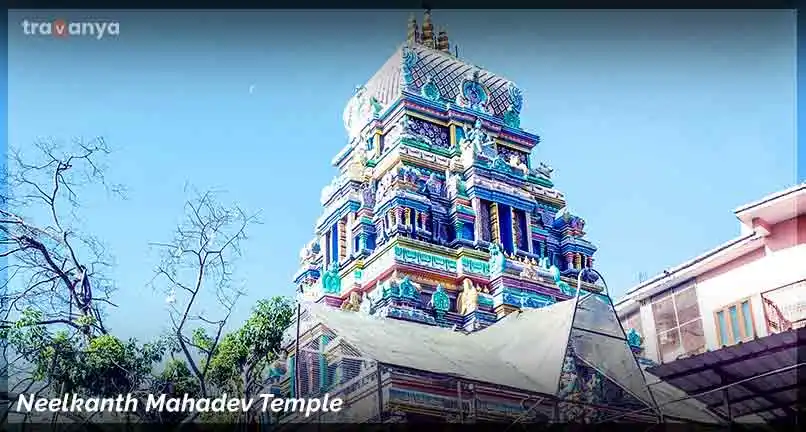
Neelkanth Mahadev Temple is a well-known Shiva temple in Uttarakhand, located 32 km from Rishikesh. It’s a sacred site dedicated to Lord Shiva, & when you visit, make sure to check out the inscriptions on the temple walls. The temple sits at an elevation of 1,330 meters, surrounded by the stunning valleys of Uttarakhand. This beautiful temple is nestled among dense forests & the impressive Nar-Narayan mountain ranges, at the meeting point of the Pankaja & Madhumati rivers.
- Location: Pauri Garhwal district
- State: Uttarakhand
- Country: India
- Address: Kotdwar – Pauri Rd, Kotdwar, Uttarakhand 246149
- Nearest Airport: Jolly Grant Airport, Dehradun
- Built-In: 1458
- Built By: Rana Sanga
- Architectural Styles: Dravidian style of temple architecture
- Deity: Lord Shiva
- Temple Timings: 9 AM – 5 PM
- Festivals: Panguni Uthiram
- Best Time To Visit In: March to April
- Nearby Location To Visit: Sri Ulagalanda Temple, Adhi Kamakshi Amman Temple
19. Brahmeswara Temple
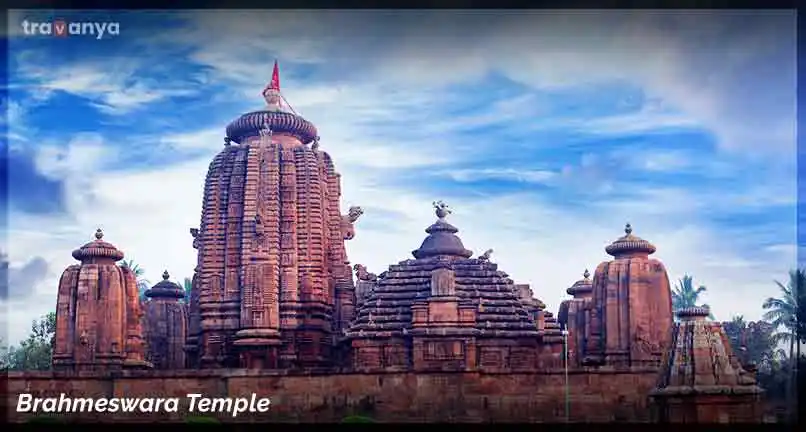
The Brahmeswara Temple in Odisha is an ancient Hindu temple dedicated to Lord Shiva, built at the end of the 9th century CE. This temple features intricate carvings both inside & outside, showcasing the exquisite craftsmanship of its time. Located in the temple-rich state of Odisha, the Brahmeswara Temple attracts numerous devotees throughout the year, who are also drawn to the beauty of four other nearby temples. The pleasant weather of the city enhances the temple’s picturesque surroundings. Built in the Kalinga architectural style, this Mahadev temple is truly a remarkable sight to behold.
- Location: Bhubaneswar
- State: Odisha
- Country: India
- Address: Near, Tankapani Road, Siba Nagar, Brahmeswar Patna, Bhubaneswar, Odisha 751002
- Nearest Airport: Biju Patnaik International Airport
- Built-In: 1058 CE
- Built By: Kolavatidevi
- Architectural Styles: Kalinga Architecture
- Deity: Lord Shiva
- Temple Timings: 6.00 AM and 8.00 PM
- Festivals: Shivratri
- Best Time To Visit In: All around the year
- Nearby Location To Visit: Sri Jogulamba temple
20. Jambukeswarar Temple
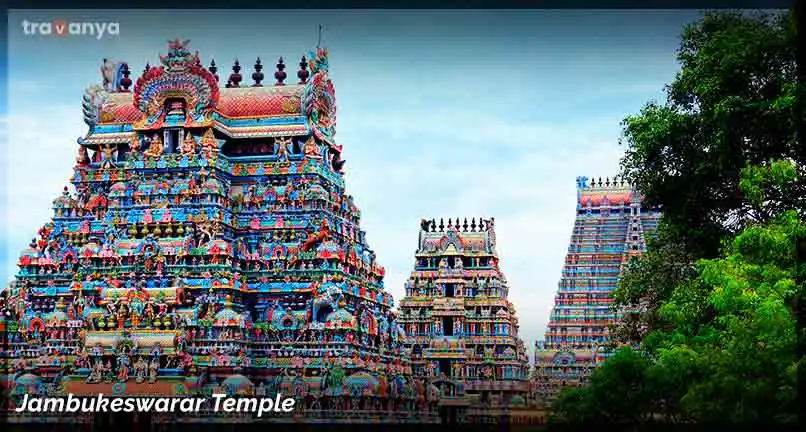
Known locally as Thiruvanaikaval or Jambukeswaram Temple, this Shiva shrine is located on Srirangam Island in Tamil Nadu. It is one of the five Shiva temples in India that form the Pancha Bhuta Sthalam. Here, Shiva is worshipped alongside his consort Parvati, referred to as Akilandeswari. One of the main attractions of this temple is the Shiva Lingam, which continuously emits trickles of water, creating a pretty reflection of Shiva’s image. Constructed around the 2nd century AD, the temple exemplifies Dravidian-style architecture. For those interested in history, it also features inscriptions dating back to the Chola Period.
- Location: Tiruchirapalli district
- State: Tamil Nadu
- Country: India
- Address: N Car St, Srirangam,, Tiruchirappalli, Tamil Nadu 620005
- Nearest Airport: Tiruchirappalli International Airport (TRZ)
- Built-In: 2nd century AD
- Built By: Kocengannan (Kochengat Cholan)
- Architectural Styles: Dravidian architecture
- Deity: Lord Shiva
- Temple Timings: 6 am–1 pm, 3–8 pm
- Festivals: Mahashivratri, Navratri
- Best Time To Visit In: All around the year
- Nearby Location To Visit: Tiruchirapalli Rock Fort, Shri Ranganatha Swamy Temple
21. Chengannur Mahadeva Temple
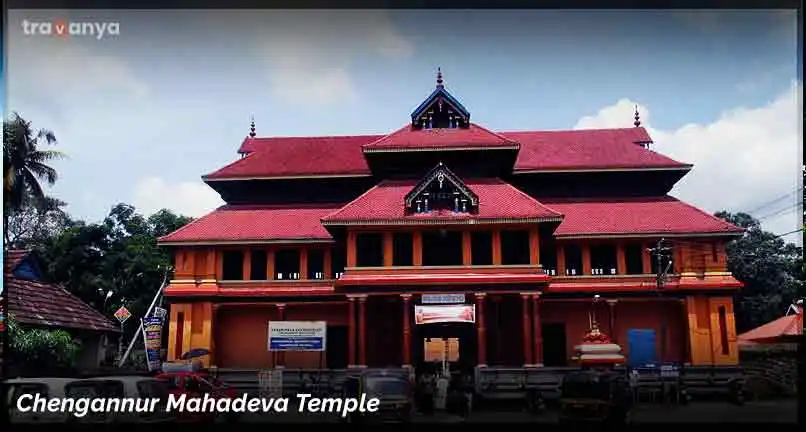
Chengannur Mahadeva Temple, one of India’s oldest Shiva temples, is located in the Alappuzha district of Kerala. This expansive temple complex features a unique circular sanctum. The main deities here are Lord Shiva & Parvati Devi. Unlike many other temples, this one has two primary shrines: one dedicated to Lord Shiva facing East & the other to Devi facing West. The Shivalingam is adorned with a gold plate that showcases an image of Ardhanareeswara, representing the combined form of Shiva & Shakti.
- Location: Chengannur
- State: Kerala
- Country: India
- Address: SH 1, Kizhakke Nada, Chengannur, Kerala 689121
- Nearest Airport: Cochin International Airport
- Built-In: AD 300
- Built By: Perumthachan
- Architectural Styles: The architecture style of Kerala
- Deity: Lord Shiva
- Temple Timings: 4:30–11 am, 5–8 pm
- Festivals: Mahashivratri, Navami
- Best Time To Visit In: April to September
- Nearby Location To Visit: Nilakkal sree Mahadeva temple
22. Kodungallur Bhagavathy Temple
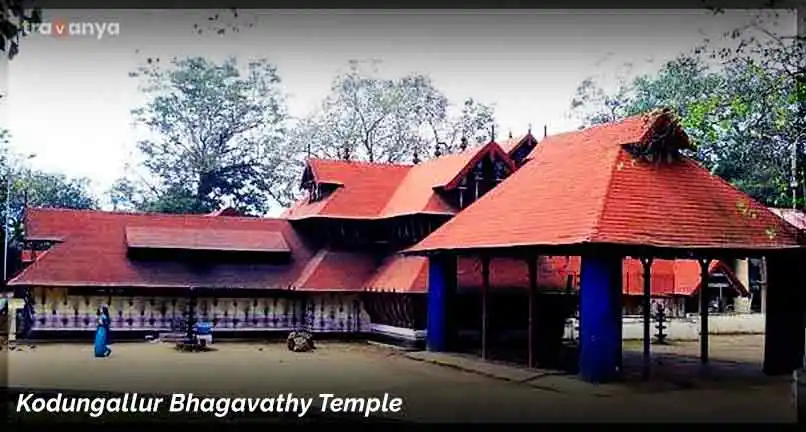
Sree Kurumba Bhagavathi Temple, also known as Kodungallur Devi Temple, is a renowned Shiva temple located in Kodungallur, Thrissur District, Kerala. This temple is dedicated to the goddess Bhadrakali, also referred to as Maha Kali or Parashakthi, who is venerated throughout the region. The goddess is affectionately known as “Sri Kurumba” or the Mother of Kodungallur. Additionally, the Thiruvanchikulam Mahadeva Temple, which is over 2,000 years old, is celebrated for its various forms of Lord Mahadeva.
- Location: Kodungallur, Thrissur District
- State: Kerala
- Country: India
- Address: Thekkenada Rd,Kodungallur, Kerala 680664
- Nearest Airport: Cochin International Airport
- Built-In: Before CE. The exact date is not known
- Built By: Cheraman Perumal
- Architectural Styles: The architecture style of Kerala
- Deity: Lord Shiva
- Temple Timings: 4am–12:30pm, 4–8pm
- Festivals: Mahashivratri
- Best Time To Visit In: April to November
- Nearby Location To Visit: Azhikode Munakkal beach
23. Ettumanoor Mahadeva Temple
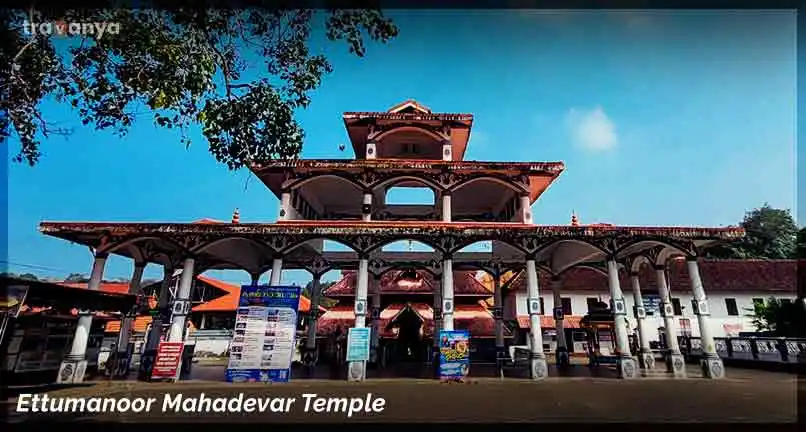
Ettumanoor Mahadeva Temple, located in the Kottayam district of Kerala, is a renowned Shiva temple famous for its beautiful murals. Among them, the most celebrated is the depiction of Nataraja, illustrating Lord Shiva as the cosmic dancer, which can be found in the gopuram, the temple’s ornate tower. This temple attracts numerous visitors, particularly during the annual Ezharaponnana procession, where seven-and-a-half elephants adorned in gold are paraded. Legend has it that the statue in the temple was a gift from a Travancore Maharaja. The temple is dedicated to Lord Shiva, & according to folklore, Khara received three Shiva Lingas directly from Mahadev, carrying one in his teeth & one in each hand as he journeyed to Kerala.
- Location: Kottayam
- State: Kerala
- Country: India
- Address: Ettumanoor Temple Rd, Ettumanoor, Kerala 686631
- Nearest Airport: Cochin International Airport
- Built-In: 1542 AD
- Built By: Unknown
- Architectural Styles: Traditional Kerala style
- Deity: Lord Shiva
- Temple Timings: 4am–12pm, 5–8pm
- Festivals: Thiruulsavam in Kumbham
- Best Time To Visit In: October to March
- Nearby Location To Visit: Cherukattu Mana
24. Vaikom Mahadeva Temple
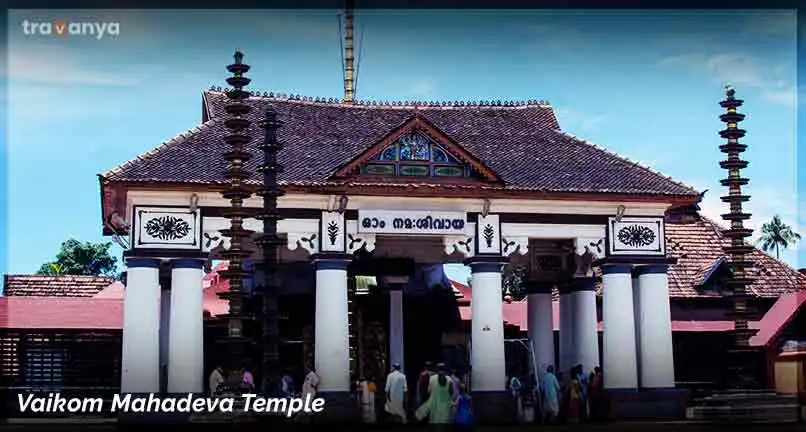
Located in the Kottayam district of Kerala, Vaikom is a prominent pilgrimage destination in southern India. Known for its Vaikkath Ashtami celebrations held in November/December, this temple is unique in that it is revered by both Shaivites and Vaishnavites. The Shiva deity here, affectionately known as Vaikkathappan, is believed to have a Shiva Linga that dates back to the Treta Yuga, making it one of the oldest Shiva temples in Kerala, where continuous worship has taken place since its inception. Vaikathashtami celebrated on the eighth day after the full moon in the Malayalam month of Vrishchikam, is one of the most significant temple festivals in Kerala. In 2021, the festival is scheduled for November 27. The festivities are centered around the illustrious Vaikom Mahadeva Temple, where Lord Shiva is honored in the form of a Shivling believed to have originated during the Treta Yuga.
- Location: Vaikom
- State: Kerala
- Country: India
- Address: Vazhamana Rd, Vaikom, Kerala 686141
- Nearest Airport: Cochin International Airport
- Built-In: 1594
- Built By: Saint Parasurama
- Architectural Styles: Traditional Kerala style
- Deity: Lord Shiva
- Temple Timings: 4am–12pm, 5–8pm
- Festivals: Vaikom Ashtami
- Best Time To Visit In: October to January
- Nearby Location To Visit: Vaikom beach, Fish world Aqua tourism, Marari Beach, boat and water sports Kochi
25. Ernakulam Shiva Temple
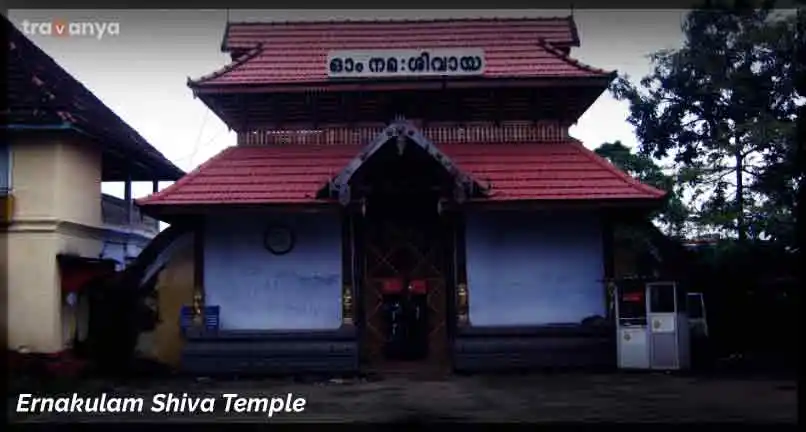
Also referred to as the Ernakulathappan Temple, this prominent temple is situated in the heart of Ernakulam, within the crowded downtown area of Kochi. As one of the most powerful Shiva temples in India, it is dedicated to Mahadev & is regarded as the city temple, believed to serve as the protector of the city according to local Hindu beliefs. The temple is nestled within the Durbar Hall Grounds & showcases a pretty example of traditional Kerala architectural style. Its history is intricately linked to the city’s heritage & was once one of the seven royal temples associated with the Kochi Maharajas. Today, the temple is managed by the Cochin Devaswom Board, which oversees its maintenance and development.
- Location: Ernakulam, Kochi
- State: Kerala
- Country: India
- Address: Durbar Hall, Ernakulam, Kerala 682011
- Nearest Airport: Cochin International Airport
- Built-In: 1846
- Built By: Diwan Sri Edakkunni Sankara Warrier
- Architectural Styles: Kerala Temple Style Architecture
- Deity: Lord Shiva
- Temple Timings: 3.30 AM to 11.00 AM, 4 PM to 8 PM
- Festivals: Thiruvonam, Mahashivratri
- Best Time To Visit In: December to March during winters
- Nearby Location To Visit: Kerala Kathakali Centre, Kashi art gallery, Wonderla Amusement park
26. Triprangode Siva Temple
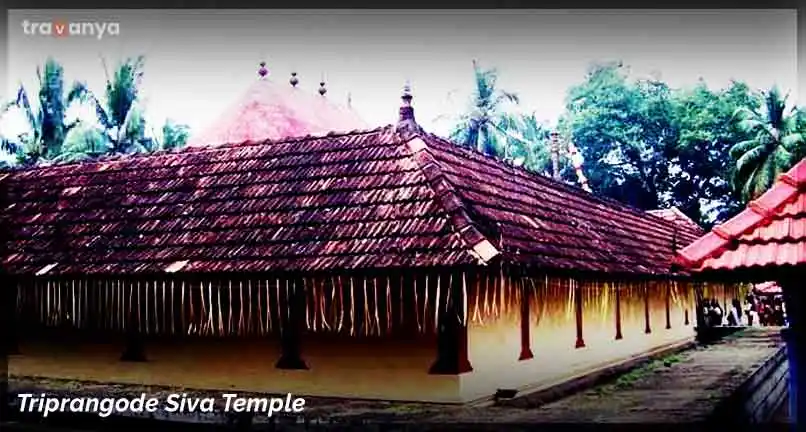
Triprangode Siva Temple, dedicated to Lord Shiva, is located in Kerala & is one of the oldest Shiva temples in India. It is easily accessible via various routes, making it a significant pilgrimage site for Hindus in northern Kerala. The temple is referenced in the Udanta Sanstrikal, dating back to the 15th century, highlighting its historical importance. It showcases remarkable examples of Kerala’s mural and architectural artistry, with a beautiful representation of the Gajabrusta style of architecture. The Triprangode Temple draws numerous devotees & tourists from around the globe, eager to experience its beauty & spiritual significance.
- Location: Triprangode, near Tirur
- State: Kerala
- Country: India
- Address: Triprangode PO,Tirur, Malappuram, Kerala Triprangode, Kerala 676108
- Nearest Airport: Kozhikode International Airport (CCJ)
- Built-In: 10th century
- Built By: Gopravi Varma Raja
- Architectural Styles: Gajabrusta-style architecture
- Deity: Lord Shiva
- Temple Timings: 4:30–11:45 am, 4:30–7:30pm
- Festivals: Shivratri, Thiruvathire
- Best Time To Visit In: October to February
- Nearby Location To Visit: Thunchan Parambu, Alathiyur Hanuman Temple
27. Aluva Mahadeva Temple
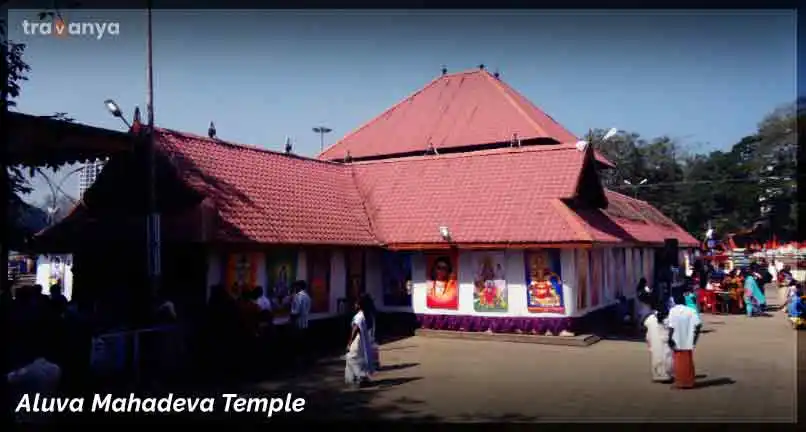
Aluva Shiva Temple, also known as Aluva Mahadeva Temple, is an amazing temple situated on the banks of the Periyar River. Nestled on the sandbank between the Mangalapuzha & Periyar rivers, it stands as one of the most significant temples dedicated to Mahadev. Located near Aluva town, this temple is easily accessible from Cochin airport & the Metro Station. The Aluva Mahadeva Temple exemplifies the unique architectural style of Kerala. Locals often refer to it as Manappuram Shiva Temple, adding to its charm & cultural significance.
- Location: Aluva
- State: Kerala
- Country: India
- Address: Manappuram, Temple Rd, Thottakkattukara, Aluva, Kerala 683108
- Nearest Airport: Cochin International Airport
- Built-In: between 1001 AD and 1010 AD
- Built By: King Raja Raja Chola
- Architectural Styles: Architecture of Kerala
- Deity: Lord Shiva
- Temple Timings: 5.00 am to 8:00 pm
- Festivals: Aluva Sivarathri festival
- Best Time To Visit In: October to March
- Nearby Location To Visit: Marthanda Varma Bridge, Aluva Palace, Cherai Beach
28. Thirunavaya Navamukunda Temple
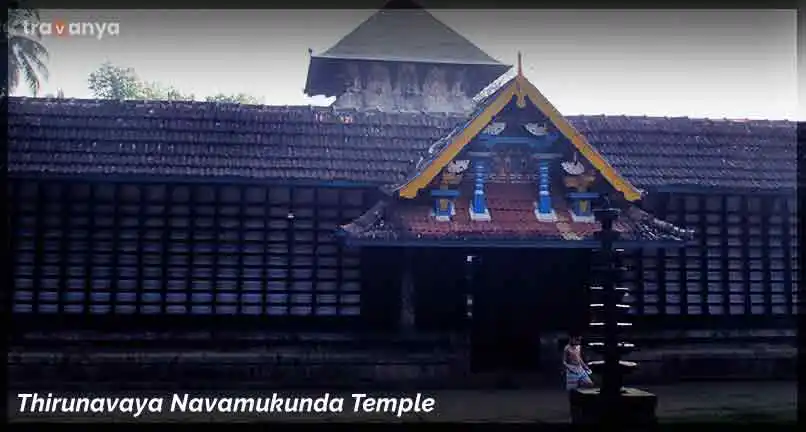
Nestled along the pristine banks of the Bharathapuzha River, the Thirunavaya Navamukunda Temple is a captivating destination for art enthusiasts, thanks to its impressive tower, rich historical significance, & picturesque surroundings. This ancient Shiva temple, located near Tirur in the Malappuram district of Kerala, is known for hosting the historic Mamankam festival, a grand celebration that takes place once every twelve years. The temple’s deep-rooted heritage & scenic beauty make it a must-visit for both devotees and visitors.
- Location: Tirunavaya
- State: Kerala
- Country: India
- Address: Tirur – Kuttippuram Rd, Dist, Thirunavaya, Kerala 676301
- Nearest Airport: Cochin International Airport
- Built-In: 8th century AD
- Built By: Vaishnava Alvars
- Architectural Styles: Architecture of Kerala
- Deity: Lord Shiva
- Temple Timings: 5–11:30am, 5–7:30pm
- Festivals: Mahashivratri
- Best Time To Visit In: October to February
- Nearby Location To Visit: Padinjarekkara Beach, Noor lake
Frequently Asked Questions
Q: Which is the oldest Shiva temple in India?
A: The Mundeshwari Temple, situated in the Kaimur district of Bihar, is recognized as one of the oldest temples dedicated to Lord Shiva in India.
Q: What is considered the first temple built for Lord Shiva?
A: The Nageshwar Temple in Dwarka is regarded as one of the earliest Jyotirlinga temples dedicated to Lord Shiva on the planet.
Q: Which is recognized as the oldest Shiva Lingam globally?
A: The Gudimallam Lingam, found in the Parasurameswara Temple, is often considered one of the oldest Shiva Lingams in existence.
Q: What does the Lingam symbolize in relation to Lord Shiva?
A: The term “Lingam,” derived from Sanskrit meaning a sign or symbol, refers to a sacred object that represents Lord Shiva. Lingams are commonly found in Shaivite temples and personal shrines dedicated to Lord Shiva throughout India.
Travanya is your ultimate one-stop solution for all your travel needs. We specialize in helping you book affordable flights and exciting holiday packages. If you’re planning to visit India to immerse yourself in the spiritual essence of Shivratri at its famous Shiva temples, don’t wait any longer—start booking your flight today! Our dedicated team of professionals is available 24/7 to assist you in finding budget-friendly tickets. Reach out to us at 91800-023-5865 for any assistance!
About Pawanpreet View All Posts
Pawanpreet is a versatile content writer and editor who enjoys experimenting with various niches of writing. Her keen eye for detail and love for thorough research helps her create high-quality content to outweigh clickbait. She extensively works for digital marketing and manages clients that range from travel to luxury goods. Her creativity is fueled by her love for learning new things, travelling, and the environment. Also, she is a free soul and an avid animal lover who believes in doing everything with a smile :)



Leave a Comment